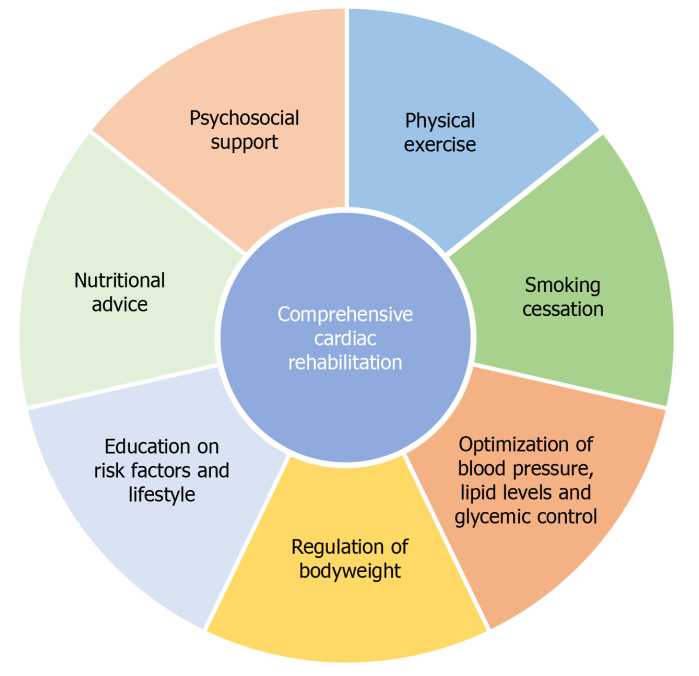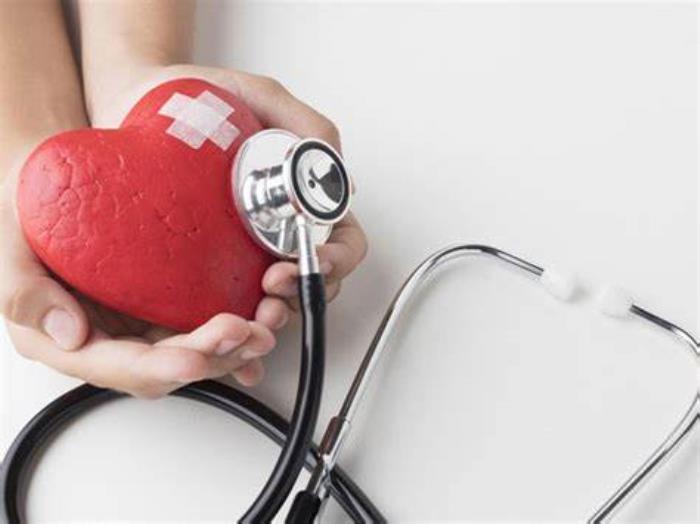Cardiac rehabilitation is a medically supervised program designed to help patients recover and improve their cardiovascular health following heart-related treatments like angioplasty. These programs typically include a combination of exercise training, lifestyle education, and emotional support to empower patients in managing their heart health. Through structured guidance, cardiac rehab helps patients reduce their risk of future heart issues, build physical resilience, and adopt heart-healthy habits.
Why Cardiac Rehabilitation is Important After Angioplasty
After an angioplasty procedure, cardiac rehabilitation is essential for helping patients regain strength and prevent further cardiovascular events. Angioplasty restores blood flow, but cardiac rehab goes a step further by addressing the underlying lifestyle factors that contribute to heart disease, such as inactivity, poor diet, and stress. Participation in rehab not only enhances recovery but also provides the knowledge and tools needed to maintain a healthier heart, reducing the risk of recurrent blockages or other complications.
The Goals of Cardiac Rehabilitation Programs
The primary goals of cardiac rehabilitation are to improve cardiovascular health, enhance physical endurance, and promote long-term heart-healthy habits. Rehab programs aim to reduce the likelihood of future heart issues by focusing on risk factors such as high blood pressure, cholesterol, and stress. Additionally, cardiac rehab supports mental well-being, helping patients cope with the emotional challenges associated with heart disease. Ultimately, these programs empower patients to lead healthier, more active lives.

Physical Activity and Exercise in Cardiac Rehab
Physical activity is a core component of cardiac rehabilitation, as it helps improve cardiovascular fitness, strengthen muscles, and boost energy levels. Rehab programs typically start with low-impact exercises that are gradually increased in intensity as patients build strength and confidence. Regular exercise helps patients regain physical endurance, reduces symptoms like fatigue, and improves circulation, which can be particularly beneficial following procedures like angioplasty.
Personalized Exercise Plans: Building Strength Safely
Each patient’s exercise plan in cardiac rehab is tailored to their specific needs, health status, and physical capabilities. Personalized plans help ensure that exercises are performed safely, without placing undue strain on the heart. Exercise specialists and medical professionals monitor progress, adjusting the regimen as patients become stronger. This individualized approach supports steady improvement while minimizing the risk of overexertion, making the journey to heart health both safe and effective.
Monitoring Heart Health During Rehabilitation
Throughout cardiac rehabilitation, patients are closely monitored to track their heart health and ensure safe progress. This may involve regular assessments of blood pressure, heart rate, and other vital signs to evaluate how the heart responds to physical activity. Continuous monitoring not only safeguards patients during exercise but also provides valuable insights into their recovery, allowing healthcare providers to make any necessary adjustments to their rehabilitation plan.

Diet and Nutrition Guidance in Cardiac Rehab
Proper nutrition is crucial in cardiac rehabilitation, focusing on a heart-healthy diet rich in fruits, vegetables, whole grains, and lean proteins. Limiting sodium, trans fats, and added sugars supports cholesterol management and blood pressure control, which are essential after angioplasty.
Managing Weight for Heart Health Post-Angioplasty
Achieving and maintaining a healthy weight reduces strain on the heart and helps prevent future artery blockages. Weight management in cardiac rehab often combines personalized dietary guidance with safe, gradual exercise.
Psychological Support and Stress Management
Stress management techniques, such as mindfulness, relaxation exercises, and counseling, are integral to cardiac rehab. Reducing stress helps patients avoid behaviors that contribute to heart disease and enhances overall well-being.
Education on Heart Health and Lifestyle Choices
Education on heart-healthy living empowers patients to make informed decisions about diet, exercise, and stress management. Understanding the impact of lifestyle choices on heart health is key to preventing further complications.

Medications and Compliance: A Key Aspect of Rehab
Medication adherence is emphasized in cardiac rehab to help manage blood pressure, cholesterol, and other risk factors. Education on medication use, possible side effects, and the importance of compliance supports long-term heart health.
Controlling Risk Factors to Prevent Future Blockages
Addressing controllable risk factors, like smoking, high blood pressure, and high cholesterol, is crucial for preventing future blockages. Patients receive guidance on lifestyle changes that support cardiovascular health.
The Role of Family Support in Successful Rehabilitation
Family involvement can positively impact a patient's recovery. Loved ones who understand the rehab process and provide encouragement help create a supportive environment that facilitates lifestyle changes.
Expected Benefits of Cardiac Rehabilitation
Cardiac rehab improves physical fitness, strengthens the heart, reduces symptoms like chest pain, and helps patients feel more confident in managing their heart health. Improved energy and mood are common benefits as well.
How Cardiac Rehab Improves Long-Term Outcomes
Research shows that patients who complete cardiac rehab have lower risks of recurrent heart issues and longer life expectancies. Rehab helps build lifelong habits that protect the heart and enhance quality of life.
Common Challenges and How to Overcome Them
Patients often face challenges like physical limitations, motivation lapses, or time constraints. Setting realistic goals, finding enjoyable activities, and enlisting family support can help overcome these obstacles.
Choosing the Right Cardiac Rehabilitation Program
Selecting a cardiac rehab program suited to individual needs is essential. Programs typically offer structured exercise, diet counseling, stress management, and education on heart health, ensuring a holistic approach to recovery.
The Phases of Cardiac Rehabilitation: What to Expect
Cardiac rehab is divided into phases, beginning with monitored exercise and education in a clinical setting, then progressing to a less supervised phase where patients work toward independence, and ending in ongoing self-care.
Transitioning from Rehabilitation to Independent Care
After rehab, patients are encouraged to continue their heart-healthy habits independently. This transition includes a personal plan for diet, exercise, stress management, and regular check-ups to sustain progress.
Understanding the Role of Imaging Techniques in Angioplasty
Gain insights into the imaging techniques used in angioplasty. This section highlights the various modalities, such as angiography and intravascular ultrasound, explaining their significance in guiding the procedure and ensuring optimal outcomes for patients undergoing treatment.
Angioplasty and Diabetes: What Patients Need to Know
Discover critical information about angioplasty in the context of diabetes. This section discusses the unique considerations and risks for diabetic patients, emphasizing the importance of effective blood sugar management and collaboration with healthcare providers to ensure successful surgery and recovery.
Conclusion: Embracing a Healthier Life After Angioplasty
Cardiac rehab is an invaluable opportunity for patients to learn and adopt habits that support heart health, reduce risks, and improve overall quality of life. With consistent dedication to these lifestyle changes, patients can look forward to a healthier future.
Best Coronary Angioplasty in India
The Best Coronary Angioplasty in India is a minimally invasive procedure that helps restore blood flow to the heart by widening blocked arteries, improving cardiovascular health and reducing chest pain.
Best Coronary Angioplasty Hospitals in India
The best coronary angioplasty hospitals in india offer state-of-the-art facilities and highly skilled cardiology teams, ensuring comprehensive pre- and post-operative care for effective treatment outcomes.
Coronary Angioplasty Cost in India
The coronary angioplasty cost in india is affordable, with transparent pricing and flexible options, making high-quality cardiovascular care accessible for patients.
Best Coronary Angioplasty Surgeons in India
The Best Coronary Angioplasty Surgeons in India are experienced specialists in interventional cardiology, dedicated to providing personalized and effective treatment for each patient.
FAQ
What is cardiac rehabilitation, and why is it recommended after angioplasty?
Cardiac rehabilitation is a structured program that combines exercise, education, and lifestyle counseling to support recovery after angioplasty, improving heart health and reducing the risk of future issues.
How does cardiac rehab improve recovery after angioplasty?
Rehab promotes healing through supervised exercise, diet modification, medication adherence, and stress reduction, all of which are essential for maintaining a healthy heart.
What exercises are safe during cardiac rehabilitation?
Safe exercises include walking, cycling, and light resistance training under professional supervision to ensure they meet the patient’s fitness level and health status.
How long does a cardiac rehab program typically last?
Most programs last between 8-12 weeks, though length can vary based on individual progress and goals.
Can cardiac rehabilitation prevent future heart problems?
Yes, cardiac rehab teaches heart-healthy habits that lower the risk of future heart issues and support long-term cardiovascular health.
Explore the Best Heart Care Resources in India
Find some of the top cardiologist, surgeons and the best heart hospitals in India
Best Heart Hospitals in India
Choosing the right hospital is crucial for successful heart treatments. If you want to explore trusted options, check the list of Best Heart Hospitals in India offering world-class facilities, advanced cardiac care units, and experienced teams for both simple and complex procedures.
Best Cardiologists in India
Finding the right cardiologist can make a huge difference in early diagnosis and long-term heart health. If you are looking for the Best Cardiologists in India, see this curated list of experts who specialize in preventive care, interventional cardiology, and complex heart disease management. Check the full list Best Cardiologists in India.
Best Cardiac Surgeons in India
If you are planning for heart surgery and need top-level expertise, we recommend exploring the Best Cardiac Surgeons in India. These surgeons have a proven record in performing bypass surgeries, valve replacements, and minimally invasive heart operations with excellent outcomes.